This is the best bavette steak recipe! Pan seared and topped with a homemade chimichurri sauce, steak bavette is a tender and juicy steak cut that is similar to flank steak and skirt steak but is even more delicious and tender and is usually cheaper too!
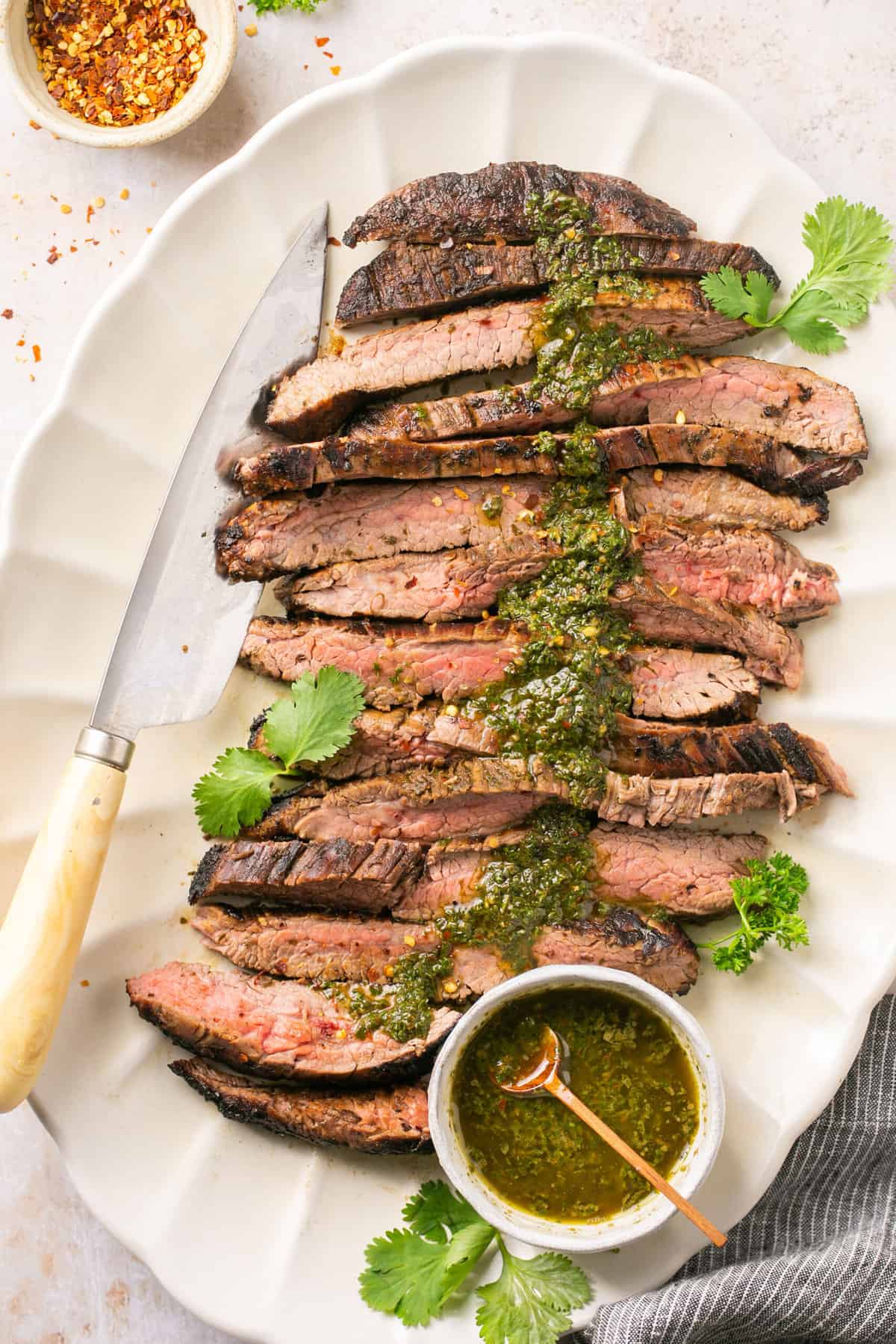
Table of Contents
What is bavette steak?
Bavette steak is a long, flat cut of beef that comes from a cow's lower chest or abdominal muscles. This steak cut is not as well known as some other types of steak but it is one of the best cuts of steaks you can buy and it's also very affordable and cheaper than many other steak cuts. This type of steak can go by other names such as Angus bavette, wagyu bavette steak, beef bavette or sirloin bavette. It is sometimes confused with other steak cuts such as flank steak or sirloin flap steak, but don't be confused, bavette steak and flank steak, while similar, are not the same.
Why you will love this recipe:
- The taste! This steak turns out so juicy, tender and full of flavour.
- It's quick and easy to make and only requires a few minutes of hands on time.
- The chimichurri sauce makes this steak taste even better, and helps make the beef even more tender.
- This steak recipe is healthy, low in carbs, keto, high in protein, Whole30 compliant, gluten-free, dairy-free and paleo.
If you love steak you will also love Denver steak.
Ingredient notes:
For the full ingredient list and exact measurements refer to the recipe card later in this post.
Jump to the Recipe Card.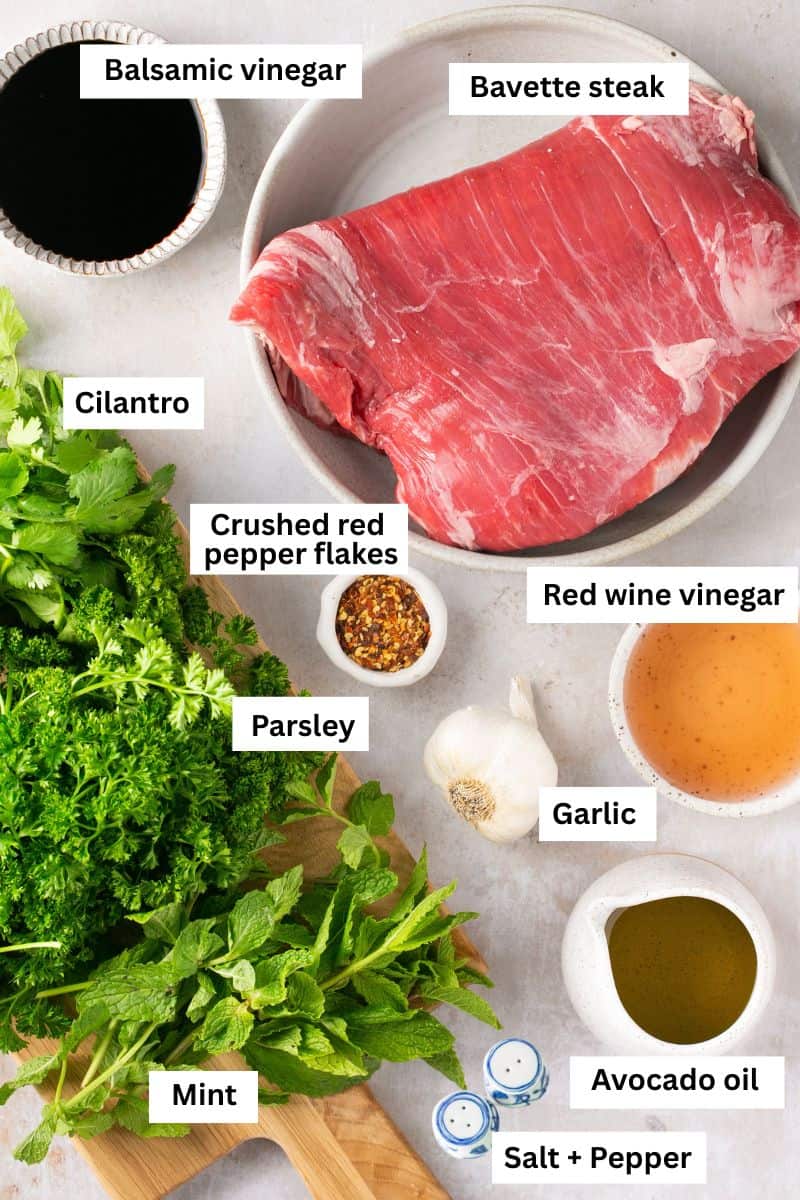
- Bavette steak - you should be able to find this beef cut at your local butcher shop. However, if you can't find this steak cut you can substitute it with flap steak, flank steak or skirt steak.
- Fresh herbs - fresh parsley, mint and cilantro blend beautifully to help give the chimichurri sauce on this steak the most delicious flavour.
- Avocado oil - to give the chimichurri sauce the perfect smooth texture. You could use olive oil instead.
- Balsamic vinegar and red wine vinegar - these two vinegars help tenderize the meat and give the chimichurri even more flavour.
- Seasonings - salt, ground black pepper, garlic cloves and crushed red pepper flakes are all used to give the chimicurri the best taste!
How to make bavette steak:
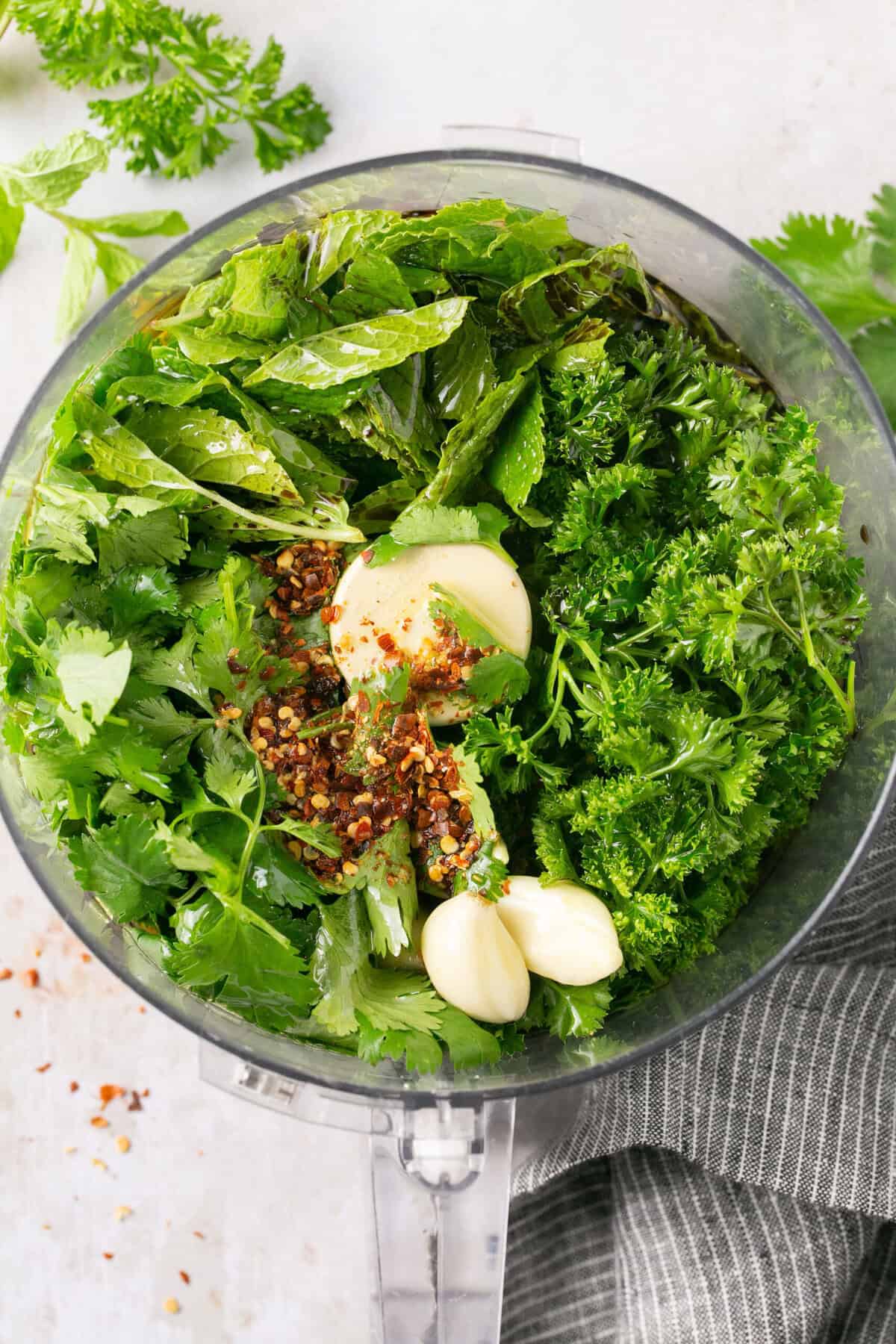
- Step 1: First make the chimichurri sauce by placing all the chimichurri ingredients into your food processor or high speed blender and blending well until smooth. Reserve approximately half of the chimichurri for sauce to serve on top of the cooked steak.
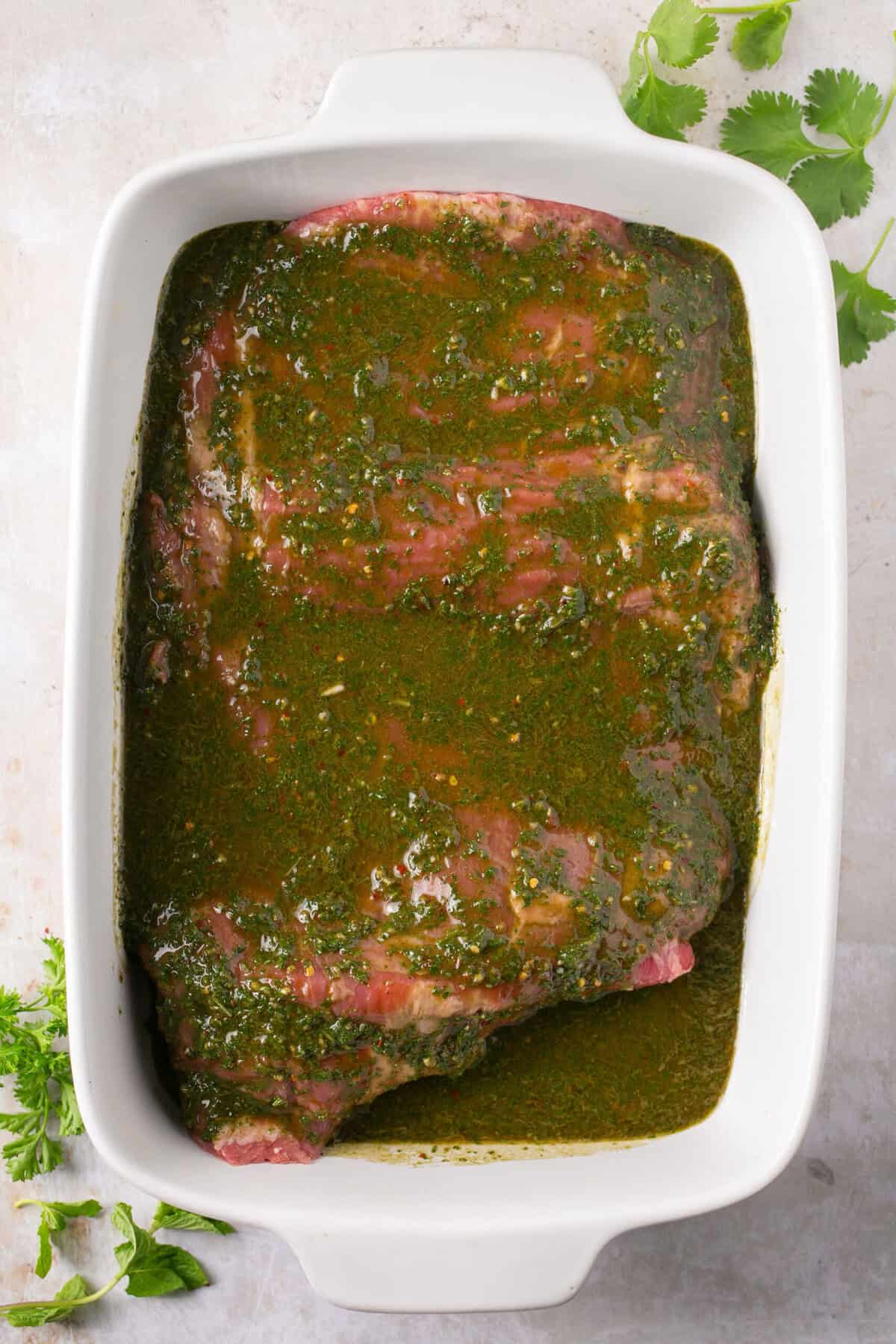
- Step 2: Now pierce the steak with a fork or knife, every ½ inch or so to help tenderize the meat. Marinate the steak in half of the chimichurri sauce for 2-4 hours.
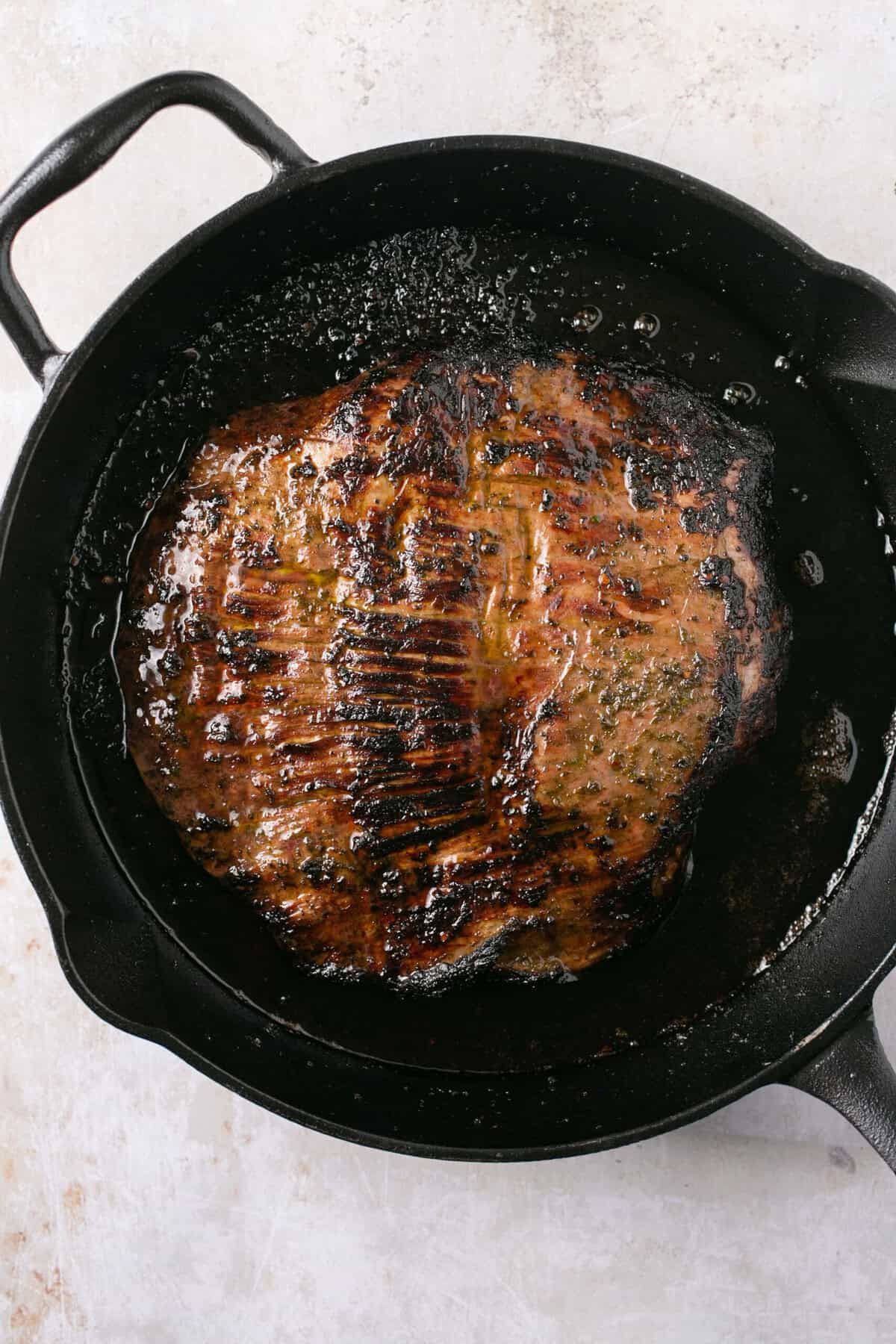
- Step 3: Then add the oil to a cast iron skillet and heat on high heat. You want your pan to be hot and at a high temperature before adding the steak. Place the steak in the pan and do not move the steak until it starts to caramelize. Cook for approximately 2-3 minutes per side, or until the steak reaches your desired temperature.
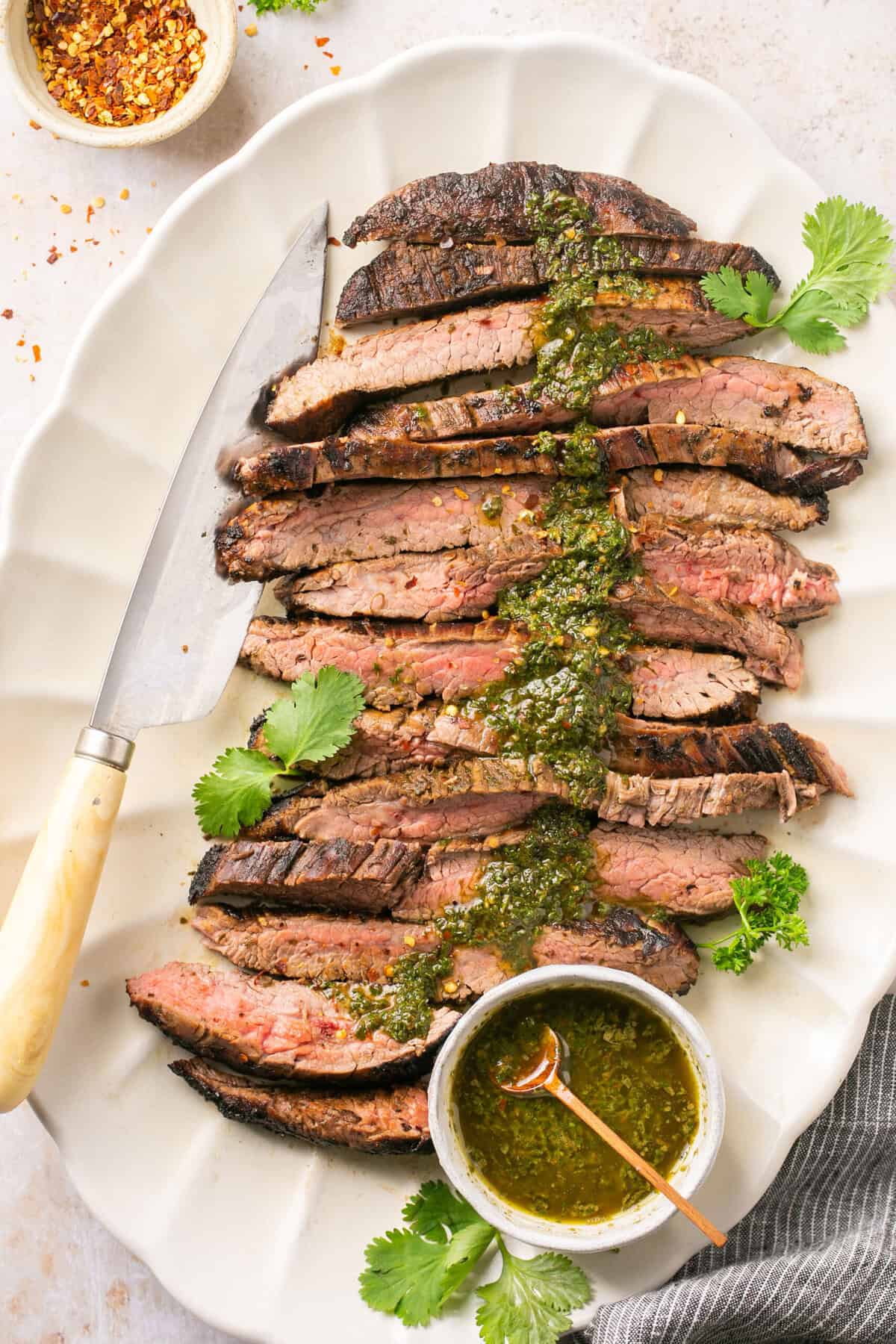
- Step 4: Remove the beef from the pan and place it on a plate to rest for 2-3 minutes. Place a piece of foil lightly over the top of the steak to retain the heat while it's resting. Serve by topping it with the extra chimichurri sauce.
Steak temperature guide:
Depending on how rare or well done you like your steak, here is a guide to help you determine what internal temperature to cook your steak to. Use a meat thermometer and place it into the middle of the steak to check how cooked it is.
- Rare steak: 125 degrees Fahrenheit.
- Medium-rare steak: 135 degrees Fahrenheit.
- Medium: 145 degrees Fahrenheit.
- Medium Well: 155 degrees Fahrenheit
- Well Done: 160 degrees Fahrenheit.
Top Tips:
- You can use any chimichurri recipe that you prefer to make this steak.
- If you have a thicker steak you will need to increase the cooking time.
- Depending on how rare or well done you like your steak, you may need to adjust the cooking times slightly to reach your desired doneness.
- Let the steak rest for a couple minutes after it's done cooking to let it get even more juicy and tender.
- How to cut: you want to cut bavette steak against the grain to get the most tender steak possible. The grain refers to the muscle fibers in the meat. Look for muscle fibers and cut in the opposite direction.
Serving ideas:
You can serve steak in so many ways. Here are just a few ideas:
- Use the cooked steak to make steak tacos or steak fajitas.
- Make a steak sandwich or steak salad.
- Serve with air fried frozen French fries to make steak and Frits.
- Serve it with a side salad such as dairy free broccoli salad, kale salad with apples, dairy free potato salad, or easy keto coleslaw.
- Pair with roasted potatoes or mashed potatoes.
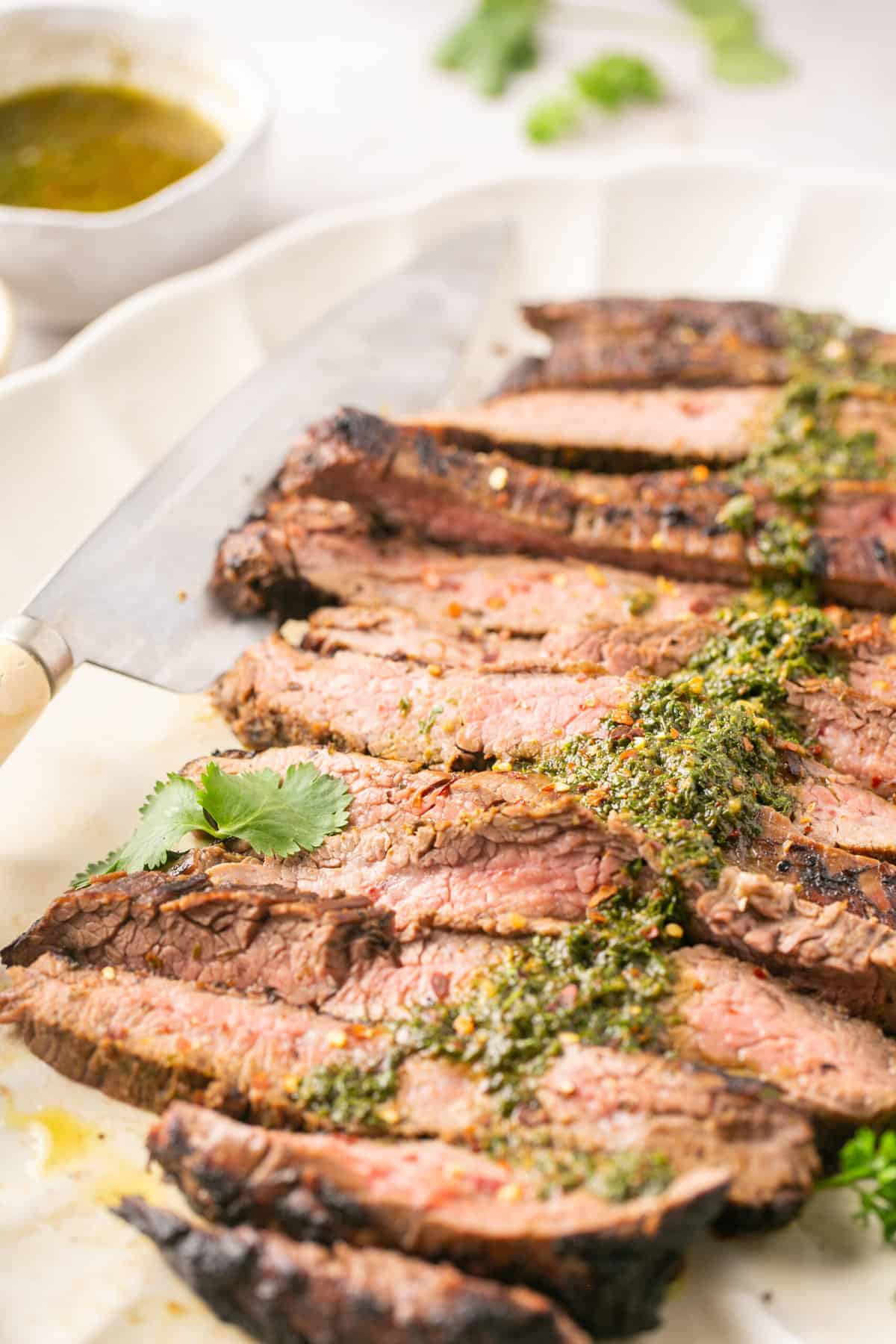
Bavette steak FAQs:
Steak bavette is extremely tender and juicy if prepared the right way. To help tenderize this cut of steak it is recommended that you either marinade it, use a meat hammer or coat it in a rub, and then once it is cooked you should cut it against the grain to help break up the muscle fibres and make it even more juicy and tender.
It is similar to flap steak, flank steak or skirt steak, so if you can't find the bavette cut at your local butcher you could substitute it with one of those other cuts of meat.
If you would prefer to grill or barbecue your steak, heat the grill to high. Then cook the steak for approximately 2-3 minutes per side.
Store any leftover steak in an airtight container in the fridge for up to 5 days.
Other beef recipes you will love:
Recipe
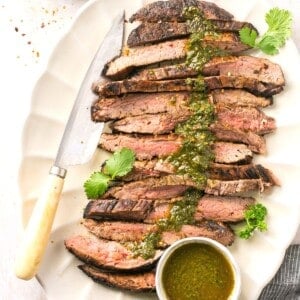
Bavette Steak
Equipment
Ingredients
Bavette Steak
- 4 lbs bavette steak (or flank steak, skirt steak or flap steak)
- 3 tablespoon cooking oil (avocado oil, coconut oil, butter or ghee all work)
Chimichurri Marinade and Sauce
- 1 bunch fresh parsley
- 1 bunch fresh cilantro
- 1 bunch fresh mint
- 1 cup avocado oil (or olive oil)
- 1/4 cup balsamic vinegar
- 1/4 cup red wine vinegar
- 4 cloves crushed garlic (more or less to taste)
- 1 tablespoon crushed red pepper flakes
- salt and pepper to taste
Instructions
- Allow your steaks to sit at room temperature for about 30 minutes prior to cooking. While not required, it allows the meat to cook more evenly.
- While the steak is resting, make the chimichurri sauce by placing all the chimichurri ingredients into your food processor or high speed blender and blending well until smooth. Reserve ~1/2 of the chimichurri for sauce to serve on top of the cooked steak, or as dipping sauce.
- Pierce the steak with a fork or knife, every ½ inch or so to tenderize the meat.
- Marinate the steak in half of the chimichurri sauce for 2-4 hours. If you do not have time to marinate, you can just serve with the chimichurri sauce, however, marinating makes for a more flavourful and tender meat.
- Add the oil to a cast iron skillet or pan and heat to high. You want your pan to be hot before adding the steak.
- Place the steak in the pan. Do not move the steak until it starts to caramelize.
- Cook for approximately 2-3 minutes per side, or until steak reaches your desired temperature. See the notes for cooking temperatures.
- Remove the steak from the pan and place it on a plate to rest for ~5 minutes. Place a piece of foil lightly over the top of the steak to retain the heat while it's resting.
- Serve the steak by cutting the bavette steak against the grain and topping it with the extra chimichurri sauce. The grain refers to the muscle fibers in the meat. Look for muscle fibers and cut in the opposite direction. Cutting these muscle fibers helps make the meat more tender vs chewy or tough.
Notes
- Nutritional values are an estimate and will vary depending on the exact ingredients used.
- Let the steak rest for a few minutes after it's cooked to make it even more tender.

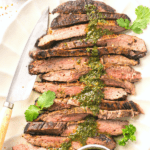
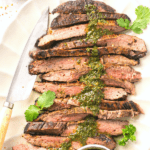
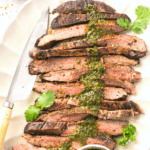
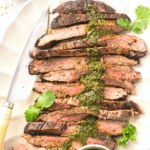
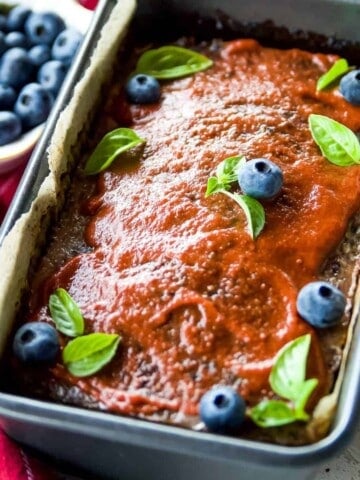
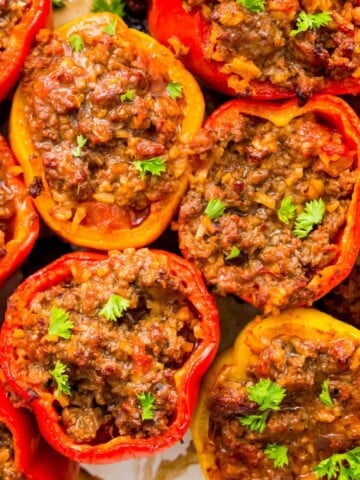
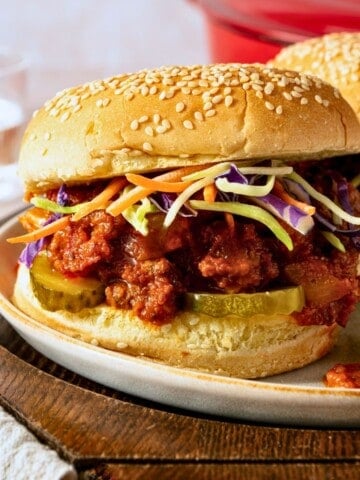
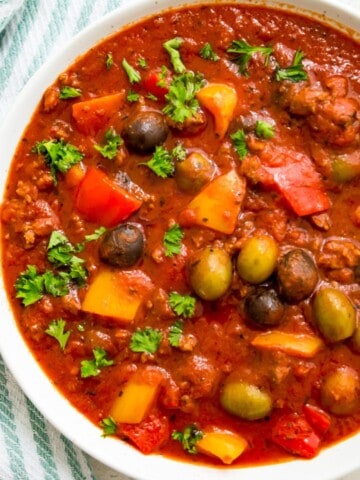
Leave a Reply